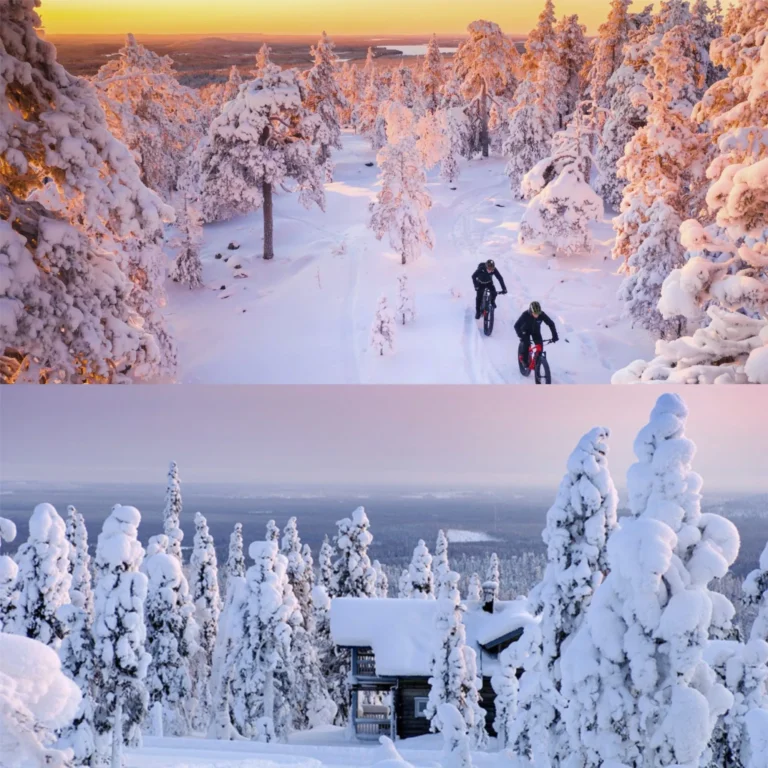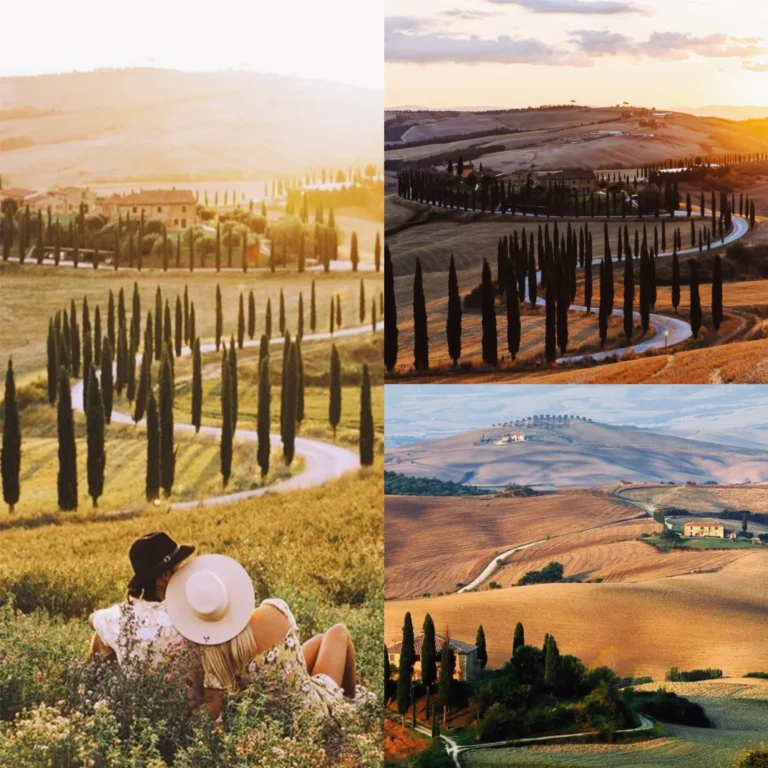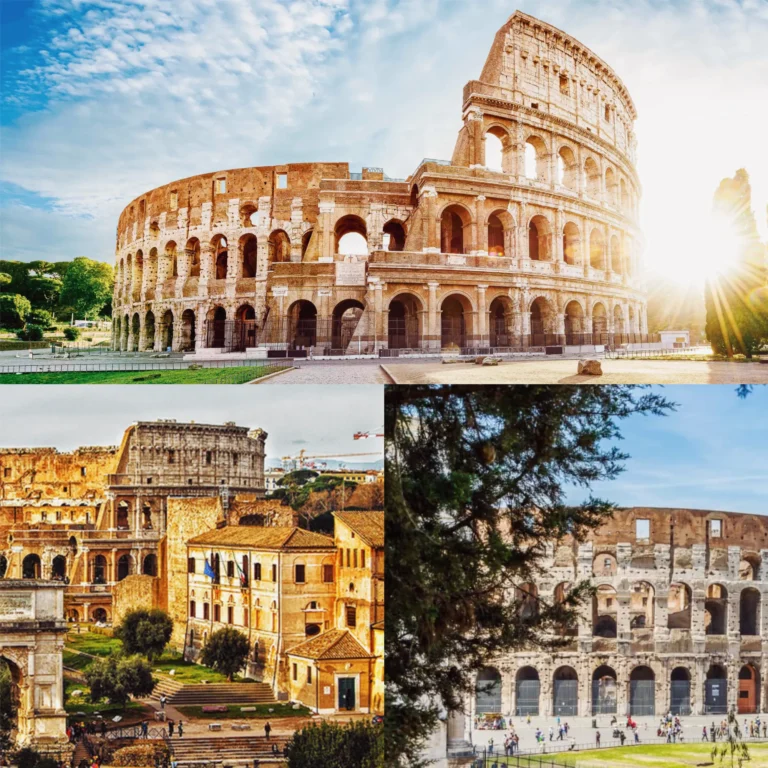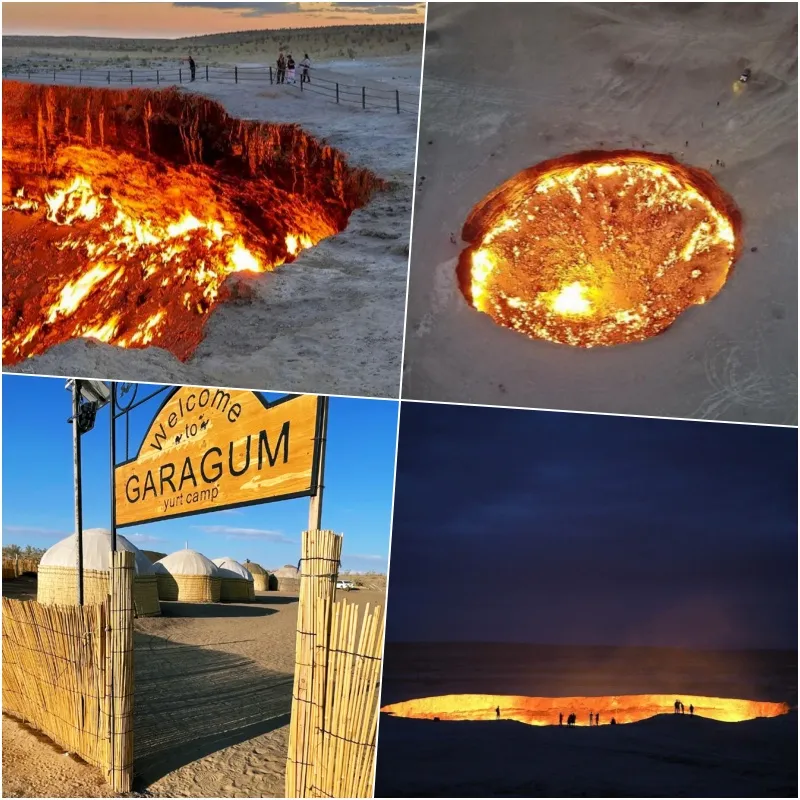
The Ever-Burning “Gateway to Hell” in Turkmenistan Continues to Draw Tourists
The “Gateway to Hell” or Darvaza Gas Crater in Turkmenistan is one of the rare tourist attractions that originated from an industrial accident. This site not only piques curiosity but has also become a must-visit destination for tourists.

Over 50 years ago, Soviet explorers drilled for natural gas in Turkmenistan and accidentally created the Darvaza Gas Crater. Today, Darvaza is a massive, ever-burning pit that attracts many visitors to this Central Asian nation.
Known as the “Gateway to Hell” or “Karakum Light,” the eternal flames in the Darvaza crater are caused by methane gas escaping through dozens of vents along the ground and crater walls. Visitors standing around the rim can feel the intense heat. The scene is particularly striking at night when the flames blaze under the starry sky.
The Darvaza Gas Crater is situated in the middle of the vast Karakum Desert, surrounded by sand dunes. It is the first stop on almost every tourist’s itinerary in Turkmenistan.
When Darvaza first began attracting visitors, the area lacked any services or facilities. People had to bring their own supplies to stay overnight. Today, the site offers yurt (Mongolian-style round tents) or regular tents for accommodation. For those who prefer not to walk, vehicles can be rented to take you directly to the crater’s edge, and food and drink services are also available.
The crater is about 70 meters wide and 30 meters deep, with steep, vertical walls. In 2018, local authorities built a safety fence around the rim to prevent visitors from getting too close to the burning crater.
Some visitors have noted that the flames at the Gateway to Hell appear to be smaller than in the past. British tourist Dylan Lupin reported that the flames are now only about 40% of what he saw back in 2009. A local guide also confirmed that the flames have decreased significantly over the past seven years.
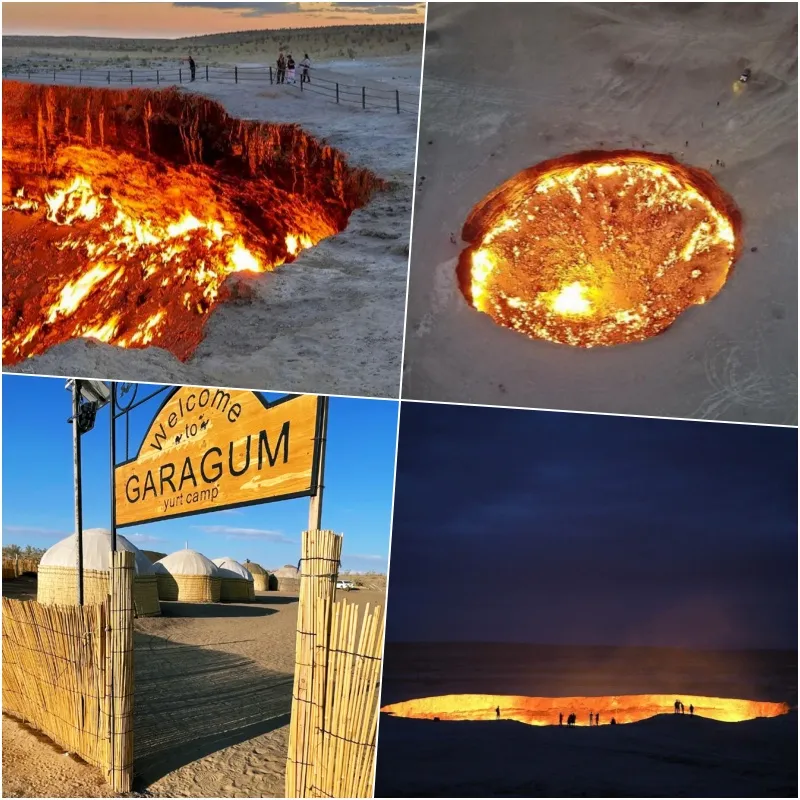
Despite the reduced flames, the Gateway to Hell remains a compelling attraction. Many visitors are captivated by the sight of a desert sandstorm covering everything except for the flickering flames emerging from the crater.
The exact timeline of the Gateway to Hell’s formation is still debated, adding to the mystery and rumors surrounding it. The most commonly accepted theory is that the crater was created in 1971 and caught fire shortly thereafter. However, the crater formed in the 1960s and only began burning in the 1980s.
How the Darvaza crater ignited remains a mystery as well. Some believe scientists threw a grenade into the crater, while others think they merely tossed in a matchstick.
The Darvaza Gas Crater is located about a four-hour drive north of the capital, Ashgabat. The journey is rough, with sandy, two-lane roads. Camels wandering along the road are a common sight for travelers.
Darwaza Camp is the most luxurious overnight option among the three camps that offer accommodation near the Gateway to Hell. Located about a five-minute walk from the crater, the camp features yurts with beds, chairs, a dining area, and outdoor toilets.
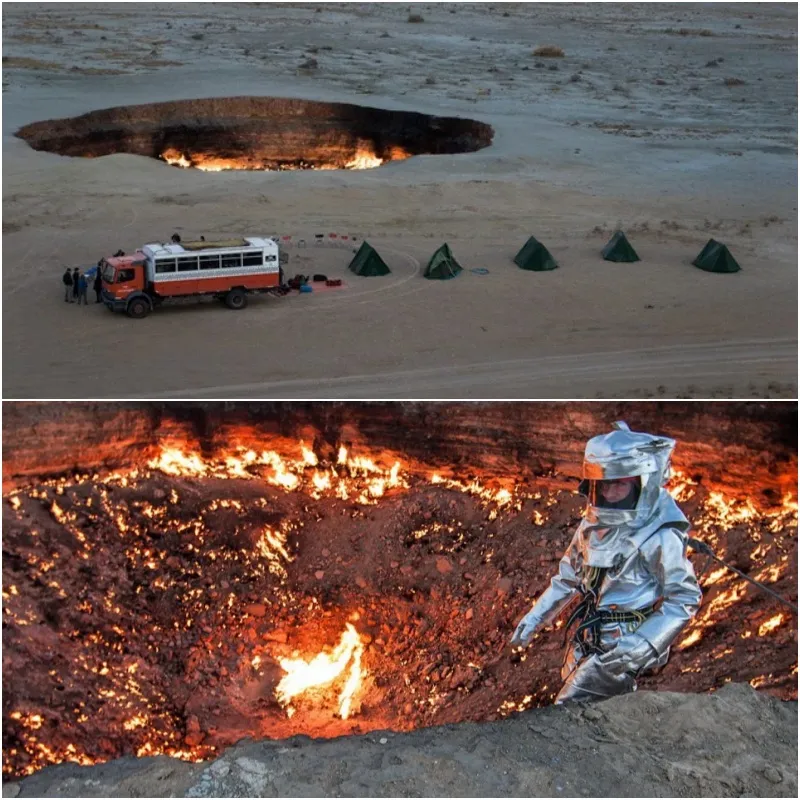
Garagum Camp, opposite the crater, also provides yurts with traditional Turkmen carpets as floor mats and solar-powered interior lighting. Evening barbecues are served outdoors. Garagum is about a 10-minute walk from the crater and is near a small rocky hill where visitors can get a panoramic view of the Gateway to Hell.
In addition to the Darvaza crater, there are two other craters nearby that were formed at the same time, but they are less spectacular.
In 2022, President had ordered scientists to find a way to extinguish the flames and close the site to visitors. The government aims to close the gas crater due to concerns about wasting a valuable natural resource, environmental pollution, and public health risks. However, no concrete action has been taken to extinguish the flames.
Some people speculate that the government drilled a nearby exploratory well, which siphoned off a large amount of gas, causing the flames at the Darvaza crater to diminish. However, this remains an unconfirmed rumor.
Local residents are worried that if the Gateway to Hell is extinguished, tourism will suffer, leading to a loss of income and jobs.
